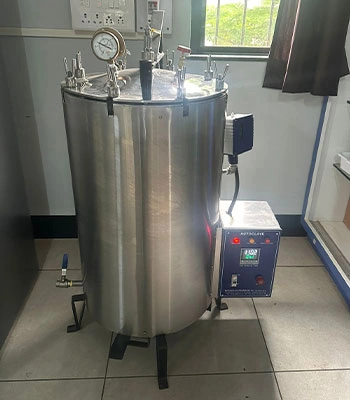How to Use a Cooker-Type Autoclave: A Step-by-Step Guide
Autoclaves are essential sterilization tools in various industries, including healthcare, laboratories, and food production. A cooker-type autoclave, in particular, is widely used for sterilizing tools, instruments, and materials by subjecting them to high-pressure steam. These machines destroy harmful microorganisms, making them critical in maintaining hygiene and safety. If you are new to a cooker-type autoclave, here is a detailed guide on using it effectively and safely.
How to Use a Cooker-Type Autoclave:
Understanding the Cooker-Type Autoclave:
A cooker-type autoclave typically comprises a sealed chamber that generates steam at high pressures. This high-pressure steam ensures that even the most stubborn bacteria and viruses are killed during sterilization. These autoclaves are mainly used for sterilizing medical instruments, laboratory equipment, and even food items in some cases. Before using the Autoclave, it’s essential to understand its components:
- Chamber: The central part of the Autoclave is where items are placed for sterilization.
- Pressure gauge: Monitors the internal pressure of the Autoclave.
- Safety valve: Ensures the pressure doesn’t exceed safe levels.
- Timer: Controls the duration of the sterilization process.
- Steam release valve: Let out the steam after the cycle is complete.
Preparation Before Use:
Before using the Autoclave, ensure it is in good working condition. Here are some preparation steps to follow:
- Inspect the Autoclave: Check the Autoclave for any visible damage or wear and tear. Ensure that the seals and door gaskets are intact to prevent leaks during sterilization.
- Clean the Chamber: Clean the autoclave chamber thoroughly before use. Residues from previous sterilization cycles can cause contamination or malfunction.
- Check the Water Supply: Ensure the Autoclave has enough distilled water to generate steam. Using tap water can cause mineral build-up, leading to inefficiency.
- Load the Autoclave Properly: When loading the items for sterilization, ensure they are arranged so that steam can circulate them. Avoid overcrowding the chamber to ensure even sterilization.
Loading the Autoclave:
Proper loading of the Autoclave is crucial for an efficient sterilization process. Here’s how you can load it:
- Even Spacing: Leave adequate space between the items to allow the steam to reach all surfaces.
- Stacking: If you need to stack items, make sure the stacked items have a gap between them to ensure proper steam penetration.
- Avoid Overloading: Overloading the Autoclave can prevent the steam from circulating effectively, leading to incomplete sterilization.
Setting the Right Parameters:
The cooker-type autoclave typically allows you to adjust the temperature, pressure, and time for sterilization. The exact settings will depend on the material being sterilized. Here are some general guidelines:
- Temperature: The Autoclave usually operates at temperatures ranging from 121°C to 134°C (250°F to 273°F). Higher temperatures are used for more thorough sterilization.
- Pressure: The pressure inside the Autoclave must be high enough to ensure the steam reaches the required temperature. Typically, the pressure is set around 15 to 30 psi.
- Time: The duration of the sterilization process will depend on the items being sterilized. Typically, it can range from 15 to 60 minutes.
Starting the Cycle
Once you’ve loaded the items and set the correct parameters, you can start the Autoclave. The machine will begin to generate steam, increasing the pressure and temperature within the chamber. The sterilization cycle will proceed automatically, and you can monitor the pressure and temperature readings.
Post-Sterilization Handling
After the sterilization cycle, you must let the items cool down before removing them. The high temperature inside the chamber can cause burns or damage, so handle the items carefully.
- Vent the Steam: Use the steam release valve to vent the steam from the chamber safely.
- Open the Chamber: Wait for the pressure gauge to indicate that it is safe to open the door before doing so. Opening the door too soon can lead to burns or the release of hot steam.
- Dry the Items: If wet, allow them to dry before use or storage.
Regular Maintenance
To ensure that your cooker-type autoclave operates efficiently, regular maintenance is essential:
- Clean the Filters: Clean the filters regularly to prevent blockages.
- Inspect Seals and Gaskets: Check seals and gaskets for wear and tear and replace them if needed.
- Calibration: Periodically calibrate the Autoclave to maintain the correct temperature and pressure levels.
Conclusion
Using a cooker-type autoclave is straightforward once you understand its operation. Proper preparation, loading, and maintenance are key to achieving effective sterilization. Always follow the manufacturer’s guidelines and safety protocols for optimal performance. By ensuring your Autoclave is regularly maintained and correctly used, you can rely on it to keep your tools, instruments, and materials free from harmful microorganisms.


Comments are closed